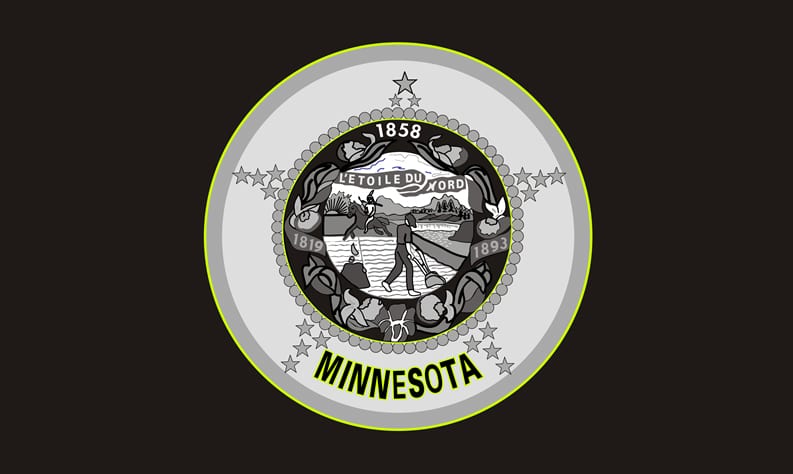

We are Attorneys and We are Riders
We Represent Minnesota Cyclists
Had a Bicycle Crash in Minnesota?
Contact Ben Dodge to see if the bicycle crash lawyers at Bike Accident Attorneys (BAA) can help. Unlike other lawyers who attempt to represent cyclists, our BAA lawyers actually ride and race their bicycles as well as appear and win in court. Most attorneys are just pencil pushers. We are court room litigators who are passionate about riding our bikes and we have associated local counsel in other states to allow us to help you in your state. Based on our expertise and experience we have also been admitted in other states to appear in court for our bicycle crash clients on a case by case basis. We can help you directly or ensure that you get the quality help you need in your state. Contact Ben Dodge now to see how we can protect your rights.
3 Tips on Choosing the Best Bicycle Crash Lawyer and Avoid Being Scammed
So how do you know if you have the best lawyer? There are 3 things to investigate when hiring a bicycle lawyer that can help you avoid a scammer. Some of that depends on what you think the “best” really means. To me, it is simple. The “best” lawyer will get you to the most advantageous position possible with as little cost as possible. That’s it. Nothing else to it. I have seen too many lawyers give up or miss out on incredible opportunities for their clients because of their own egos arguing the irrelevant issues or pushing too hard in a direction that only generates their own fees as opposed to the results the client would rather have.
The most advantageous position is sometimes not even what the client comes in asking for. I can’t tell you how many times I probably talked myself out of a job in an initial consult because what the client wanted actually puts them in a worse position and I wasn’t afraid to tell them so. It would have been so much easier to just tell them what they desperately wanted to hear, help them feel heard and let them vent a little. All just tell them we better hurry up and rush to court so they can be vindicated. When in reality, that won’t help them at all. So that is what many lawyers do- they try to figure out what the client wants emotionally and then sell them a legal service that matches that emotional need and of course charge them for it based on whatever they think the client is able to pay.
Obviously not all attorneys are this cold-hearted. Many of us actually care. Many of us strive to do right by the client as opposed to just trying to do right by the pocket book.
Here are some general things to watch out for when looking for an attorney, especially a bicycle accident lawyer (I don’t like the word accident, I prefer “crash” – but most of the world uses the term accident and I understand why, so I sue it too). Here are the issues to watch out for:
1) Specific Knowledge
Do they have the specific knowledge required to handle your case? Just because they graduated from law school doesn’t mean they know anything about cycling! In fact, in my opinion, most of the country doesn’t know anything about cycling. It is crazy that all sorts of professionals from police offices charged with enforcing cycling safety to insurance adjusters responsible for finding fault don’t know anything about cycling laws. This is especially true with local rules, ordinances, and even more so with knowledge of local customs and implied expectations of cycling culture and more. Now fast forward to the moment when you are looking for an attorney to help you with your crash (your bicycle accident case) and you see a billboard on the side of the freeway, or a TV commercial, or even a Google search where the words cycling lawyer were used… How much specific knowledge of bicycle cases do you think they really have? Ask them how often they ride? Ask them what their favorite route is? Ask them if they could buy any bike on the planet what would it be and why? These questions will help you quickly identify if they are even remotely plugged into the cycling community and whether or not they have specific knowledge relating to cycling. Why is this important? SIMPLE- as a cyclist you already know that most people (drivers) hate that we are out on the roads. You already have an uphill court battle of public opinion. Being right on some traffic issue isn’t enough for us. Your lawyer must know this intimately in order to successfully navigate the complex negotiations of your case with the insurance company and opposing attorneys and then ultimately in a court room where you can bet no one on the jury will be a cyclist.
Also on the topic of specific knowledge. How many cases like this issue have they handled? What were the outcomes? How confident do you feel with their answers to these questions? Specific case knowledge is helpful. Do they have experience with the opposing insurance company? With that specific police department? With your judge? And on and on.
Specific knowledge is very helpful and you can’t buy it with expensive marketing on billboards, commercials, etc. It is earned with blood, sweat, and sometimes tears through years of experience.
2) Desk or Courtroom
The next thing to investigate is whether or not the attorney you’re thinking about hiring is a desk lawyer (I fondly refer to these lawyers as pencil pushers) or a courtroom lawyer. There is a need for all sorts of lawyers. But unless you are planning on having your bicycle accident attorney draft a will or some contract for you, then you want a courtroom lawyer not a pencil pusher.
I know this is a guess, but in my experience it seems like 95% of lawyers, especially the ones who end up on billboards and commercials, are just pencil pushers. Once their cases get to tough they refer them out to a real lawyer to finish the courtroom stuff for them. Most attorneys talk a big talk in their consult with potential clients about how good they are, but when push comes to shove and they have to actually prove it to you in a courtroom with you watching, their peers (opposing lawyers on the other side of your case) and in front of a judge and jury- they simply freak out and completely drop the ball or settle for less than you should ever take just to avoid the scary courtroom.
Don’t mistakenly hire a pencil pusher. Hire a bicycle accident lawyer who thrives in the courtroom. One simple question to help catch them off guard is ask them when is the last time they were in court? What was it about? What kind of hearing was it? What was the argument they proposed and made to the judge? How did it turn out? These simple questions will help you find out if they are pencil pushers or not. Their hesitation or odd answers are a dead give away that they are likely misleading you on their courtroom abilities and experience.
We are courtroom lawyers, sometimes even going multiple times per week to court. We file lawsuits, we don’t just write a few meaningless settlement letters and sell our clients on how good the settlement is- we prove it to our clients.
3) Do You Recognize Them from a Billboard or Commercial?
Yes I said that right, do you actually recognize them from a billboard or a TV commercial? Why is this even a thing? Well, it sounds harsh but those lawyers out there spending hundreds of thousands of dollars per year (for some they spend that per month) just to recruit new clients may be struggling to get their current and past clients to even refer to them… Yep, what if your lawyer was so good and you were so impressed that you happily sent business to him/or her? See how powerful that is? I’m not saying that everyone who advertises in our line of work is a horrible lawyer. What I am saying is that it is a bit suspect since advertising is NOT cheap and it begs the question as to why they have to advertise in the first place? Is their reputation with their own clients so bad that they have to find an alternative source to finding clients? Possibly. I’m one of those guys who avoids, in fact runs away from any professional I see on a billboard. I’d much rather consult a trusted friend and get their opinion as to whom I should see or NOT see based on their experience.
Not all lawyers who advertise are bad. But like I said, I personally run away from any professional on a billboard or TV commercial. A good old fashioned referral has always proved to be much better much more often. Just sayin’.

These are just 3 of the many things to look out for when you hire a bicycle accident lawyer. Call my office up and we can chat over the phone sometime about all the other million things to look out for like attorney billable hour quotas, bonus structures, professional reputation among peers, and so much more!
We are here for you. We got your back. We protect our own like you’re a member of our tribe. Good luck. Be safe out there and keep the rubber side down.
Contact Ben Dodge and let the lawyers in the Bike Accident Attorneys National Network help you. We will assist you in your case and/or find someone for you in your state that we can trust and recommend. We have your back. We are here for you.
#MyLawyerDoesntSuck


Need a Consultation?

Minnesota Bicycle Accident Statistics
Resident Population
5,520,000
Total Traffic Fatalities
392
Pedalcyclist Fatalities
7
Percentage of Total Traffic Fatalities
1.8%
Pedalcyclist Fatalities per Million Population
1.27
Minnesota Bicycle Statutes
The following is a summary of the Minnesota Statutes (2014) pertaining to bicyclists. For more details concerning the following laws and penalties, please visit www.revisor.mn.gov/statutes/?id=169.222.
1. What is the definition of a bicycle?
Minnesota Statute 169.011, Subdivision 4:
(a) “Bicycle” means every device capable of being propelled solely by human power upon which any person may ride, having two tandem wheels, and including any device generally recognized as a bicycle though equipped with two front or rear wheels. Bicycle includes an electric-assisted bicycle, as defined in subdivision 27.
(b) “Bicycle” does not include scooters, motorized foot scooters, or similar devices.
2. Is a bicycle considered a motor vehicle in Minnesota?
No. Minnesota Statute 169.011, Subdivision 42:
A “motor vehicle” is defined as every vehicle which is self-propelled and every vehicle which is propelled by electric power obtained from overhead trolley wires. Motor vehicle does not include an electric personal assistive mobility device or a vehicle moved solely by human power.
3. What is an electric-assisted bicycle and where can I use one?
Minnesota Statute 169.011, Subdivision 27:
“Electric-assisted bicycle” means a bicycle with two or three wheels that:
(1) has a saddle and fully operable pedals for human propulsion;
(2) meets the requirements:
(i) of federal motor vehicle safety standards for a motor-driven cycle in Code of Federal Regulations, title 49, sections 571.1 et seq.; or
(ii) for bicycles under Code of Federal Regulations, title 16, part 1512, or successor requirements; and
(3) has an electric motor that (i) has a power output of not more than 1,000 watts, (ii) is incapable of propelling the vehicle at a speed of more than 20 miles per hour, (iii) is incapable of further increasing the speed of the device when human power alone is used to propel the vehicle at a speed of more than 20 miles per hour, and (iv) disengages or ceases to function when the vehicle’s brakes are applied.
Minnesota Statute 169.011, Subdivision 47:
An electric-assisted bicycle with pedals and a motor that can’t go faster than 20 mph is considered a bicycle under state law; all relevant bicycle laws apply.
Minnesota Statute 169.222, Subdivision 6(b)
The driver of an electric-assisted bicycle must be at least 15 years old.
Minnesota Statute 85.015, Subdivision 1(d) and Statute 85.018, Subdivision 2(d):
Generally electric-assisted bicycles may operate like bicycles do, unless otherwise posted.
4. What is the definition of a roadway?
Minnesota Statute 169.011, Subdivision 68:
“Roadway” means that portion of a highway improved, designed or ordinarily used for vehicular travel, exclusive of the sidewalk or shoulder. During periods when the commissioner allows the use of dynamic shoulder lanes as defined in subdivision 25, roadway includes that shoulder. In the event a highway includes two or more separate roadways, the term “roadway” as used herein shall refer to any such roadway separately but not to all such roadways collectively.
5. Can a bicyclist be given a ticket for impeding traffic if they are traveling on a roadway and obeying all rules of the road?
No. Bicyclists are considered traffic based on Minnesota Statute 169.011, Subdivision 84 and have the same rights and responsibilities applicable to the driver of a vehicle according to Minnesota Statute 169.222, Subdivision 1.
Minnesota Statute 169.011 states: “Traffic” means pedestrians, ridden or herded animals, vehicles, streetcars and other conveyances, either singly or together, while using any highway for purposes of travel.
6. Is it legal for bicyclists to run red lights?
No, but it is defensible in one scenario. Minnesota Statute 169.06, Subdivision 9:
If a bicyclist has come to a complete stop and is waiting at a light that uses a sensor that does not detect them, then the bicyclist must: 1) wait a reasonable amount of time (recommend at least one signal cycle), 2) proceed after yielding to all cross traffic. Then, if pulled over, the bicyclist can say that they met the limited conditions cited under Minnesota’s Affirmative Defense Statute.
7. Must motor vehicles give bicycles three feet of passing distance in Minnesota?
Yes, but 3 feet is the minimum. More space is better and needed for safety at higher speeds. Minnesota Statute 169.18, Subdivision 3:
(3) the operator of a motor vehicle overtaking a bicycle or individual proceeding in the same direction on the roadway shall leave a safe distance, but in no case less than three feet clearance, when passing the bicycle or individual and shall maintain clearance until safely past the overtaken bicycle or individual.
8. What other rules must a motorist follow when overtaking or following bicyclists?
Minnesota Statute 169.18, Subdivision 4:
(4) the driver of a vehicle may overtake and pass another vehicle upon the right only under conditions permitting such movement in safety. In no event shall such movement be made by driving in a bicycle lane or onto the shoulder, whether paved or unpaved, or off the pavement or main-traveled portion of the roadway.
9. Can a motorist park or drive in a bike lane?
No, motorists may not drive in bike lanes. Minnesota Statute 169.18, Subdivision 6:
Whenever a bicycle lane has been established on a roadway, any person operating a motor vehicle on such roadway shall not drive in the bicycle lane except to perform parking maneuvers in order to park where parking is permitted, to enter or leave the highway or to prepare for a turn as provided in section 169.19, Subdivision 1.
No, motorists may not park in a bike lane unless signed as such. Minnesota Statute 169.34, Subdivision 1:
No person shall stop, stand, or park a vehicle, except when necessary to avoid conflict with other traffic or in compliance with the directions of a police officer or traffic-control device, in any of the following places:
(14) within a bicycle lane, except when posted signs permit parking.
10. Does a bicyclist have to obey the same traffic laws as a motorist?
Yes. Minnesota Statute 169.222, Subdivision 1:
Every person operating a bicycle shall have all of the rights and duties applicable to the driver of any other vehicle by this chapter, except in respect to those provisions in this chapter relating expressly to bicycles and in respect to those provisions of this chapter which by their nature cannot reasonably be applied to bicycles.
11. Is it legal to ride between lanes (AKA lane splitting)?
No. On any laned roadway, bicyclists must ride within a single lane. Bicyclists may only pass on the right if there is a dedicated bicycle facility or a marked shoulder. Minnesota Statute 169.222 relates specifically to the operation of bicycles and requires that people riding bicycles have to abide by the laws of any other vehicle. Statute 169.222 reinforces this point by referencing the fact that bicycles must ride within a single lane.
Minnesota Statute 169.222, Subdivision 1:
Traffic laws apply. Every person operating a bicycle shall have all of the rights and duties applicable to the driver of any other vehicle by this chapter, except in respect to those provisions in this chapter relating expressly to bicycles and in respect to those provisions of this chapter which by their nature cannot reasonably be applied to bicycles.
Minnesota Statute 169.222, Subdivision 4(c):
Persons riding bicycles upon a roadway or shoulder shall not ride more than two abreast and shall not impede the normal and reasonable movement of traffic and, on a laned roadway, shall ride within a single lane.
12. Is it legal to carry another person on a bicycle? What about a child seat?
Yes, if the bicycle was designed to carry a passenger or has an approved and attached child seat.Minnesota Statute 169.222, Subdivision 2:
No bicycle, including a tandem bicycle, cargo or utility bicycle, or trailer, shall be used to carry more persons at one time than the number for which it is designed and equipped, except an adult rider may carry a child in a seat designed for carrying children that is securely attached to the bicycle.
13. Is it legal to grab onto another vehicle to “hitch a ride”?
No. Minnesota Statute 169.222, Subdivision 3:
Persons riding upon any bicycle, coaster, roller skates, toboggan, sled, skateboard or toy vehicle shall not attach the same or themselves to any street car or vehicle upon a roadway.
14. Does a bicyclist have to ride with the direction of traffic?
Yes. A bicyclist on the roadway in a traffic lane should ride in the direction of traffic, as should a bicyclist on the shoulder or in a bike lane. Minnesota Statute 169.222, Subdivision 1 and 4(b):
4(b) If a bicycle is traveling on a shoulder of a roadway, the bicycle shall travel in the same direction as adjacent vehicular traffic.
15. Must a bicyclist ride in a bike lane or a side path?
No. There is no law which requires bicyclists to use a bike lane. Bicyclists may need to use adjacent lanes to pass another bicyclist, to avoid being too close to parked cars (if opening car doors could obstruct their path), to avoid obstructions or slippery conditions or to prepare for a turn. Whenever bicyclists enter or exit a bike lane or side path, they should signal and yield to motorists already in an adjacent travel lane.
16. Where in the right half of the roadway must a bicyclist ride?
Because bikes are narrow it is sometimes possible for bikes and vehicles to share the same lane (14-feet or greater wide lanes). Where this is possible, the bicyclist must keep as far to the right as safe (see below). Faster traffic can overtake provided it can safely pass the cyclist (three foot minimum).
When overtaking is not safe for either the faster motor vehicle or the bicyclist (less than 3 feet clearance), the bicyclist is legally entitled to use as much of the lane as reasonable for safety (generally in lanes 14-feet wide or less), the motor vehicle should either wait to pass or change lanes to overtake the bicyclist.
Minnesota Statute 169.222, Subdivision 4:
(a) Every person operating a bicycle upon a roadway shall ride as close as practicable to the right-hand curb or edge of the roadway except under any of the following situations:
(1) when overtaking and passing another vehicle proceeding in the same direction;
(2) when preparing for a left turn at an intersection or into a private road or driveway;
(3) when reasonably necessary to avoid conditions, including fixed or moving objects, vehicles, pedestrians, animals, surface hazards or narrow width lanes, that make it unsafe to continue along the right-hand curb or edge; or
(4) when operating on the shoulder of a roadway or in a bicycle lane.
17. May bicyclists ride two abreast?
Although riding single-file is often safest, bicyclists are allowed to ride two-abreast on roads. Minnesota Statute 169.222, Subdivision 4:
(c) Persons riding bicycles upon a roadway or shoulder shall not ride more than two abreast and shall not impede the normal and reasonable movement of traffic and, on a laned roadway, shall ride within a single lane.
18. Must a bicyclist ride on the sidewalk?
No. Minnesota law does not require bicyclists to ride on the sidewalk and BikeMN does not generally recommend it because of safety hazards to the bicyclist and to pedestrians. Most importantly, sidewalks are not designed for bicycle travel speed. (BikeMN recommends that children 10 and under ride on the sidewalk and under the leadership of an adult as they may not yet have developed the physical skills and cognitive ability to navigate roadways.)
19. Is it legal for a bicyclist to ride on the sidewalk?
Sometimes. Minnesota Statute 169.222, Subdivision 4:
Minnesota law does not prohibit sidewalk riding unless in a business district or where prohibited by city ordinance. In Minnesota, a business district, defined by a block with more than 50 percent business use. Additionally, a person lawfully operating a bicycle on a sidewalk, or across a roadway or shoulder on a crosswalk, shall have all the rights and duties applicable to a pedestrian under the same circumstances. This means that the bicyclist must not enter a crosswalk if a vehicle is approaching and it is impossible for the driver to stop. While riding on a sidewalk a bicyclist should move at pedestrian speeds and must also continue to give an audible signal when passing other pedestrians and yield to other pedestrians on the sidewalk. (BikeMN recommends that children 10 and under ride on the sidewalk and under the leadership of an adult as they may not yet have developed the physical skills and cognitive ability to navigate roadways.)
20. Does a bicyclist have to dismount and walk their bike through a crosswalk?
No, but use caution. A bicyclist using a crosswalk does not explicitly have to dismount to cross the intersection, but in some cases this may be the safest option. A person lawfully operating a bicycle on a sidewalk, or across a roadway or shoulder on a crosswalk, shall have all the rights and duties applicable to a pedestrian under the same circumstances. This means that the bicyclist must not enter a crosswalk if a vehicle is approaching and it is impossible for the vehicle to stop.
21. Does a bicyclist have to wear a helmet?
Minnesota state law does not require bicyclists to wear helmets. The Bicycle Alliance of Minnesota strongly recommends wearing one because they can prevent or reduce the severity of head and brain injuries in the event of a crash.
22. Does a bicyclist have to use lights when it’s dark?
Yes. Minnesota Statute 169.222, Subdivision 6:
(a) No person shall operate a bicycle at night time unless the bicycle or its operator is equipped with (1) a lamp which emits a white light visible from a distance of at least 500 feet to the front; and (2) a red reflector of a type approved by the Department of Public Safety which is visible from all distances from 100 feet to 600 feet to the rear when directly in front of lawful lower beams of headlamps on a motor vehicle. A bicycle equipped with lamps that are visible from a distance of at least 500 feet from both the front and the rear is deemed to fully comply with this paragraph.
23. Does the law require brakes on bicycles?
Yes. The law requires a brake, which includes fixed gear bicycles. Minnesota Statute 169.222, Subdivision 6:
(e) No person shall operate a bicycle unless it is equipped with a rear brake or front and rear brakes which will enable the operator to make a braked wheel skid on dry, level, clean pavement. A bicycle equipped with a direct or fixed gear that can make the rear wheel skid on dry, level, clean pavement shall be deemed to fully comply with this paragraph.
24. Does a bicyclist have to signal their turns or lane changes?
Yes, but not always. Minnesota Statute 169.222, Subdivision 8:
An arm signal to turn right or left shall be given continuously during the last 100 feet traveled by the bicycle before turning, unless the arm is needed to control the bicycle, and shall be given while the bicycle is stopped waiting to turn.
25. Is it legal to park on the street? Where can bicyclists park on a sidewalk?
Yes. Minnesota Statute 169.222, Subdivision 9:
(a) A person may park a bicycle on a sidewalk unless prohibited or restricted by local authorities. A bicycle parked on a sidewalk shall not impede the normal and reasonable movement of pedestrian or other traffic.
(b) A bicycle may be parked on a roadway at any location where parking is allowed if it is parked in such a manner that it does not obstruct the movement of a legally parked motor vehicle.
26. Is it legal to ride on a limited-access highway?
No. Bicyclists are prohibited from controlled access highways. Bicyclists are only prohibited where freeway entrance signage prohibits it. This means that most of Minnesota’s state and trunk highways are accessible by bike.
Minnesota Statute 169.305, Subdivision 1:
(c) The commissioner of transportation may by order, and any public authority may by ordinance, with respect to any controlled-access highway under their jurisdictions prohibit or regulate the use of any such highway by pedestrians, bicycles or other nonmotorized traffic, or by motorized bicycles, or by any class or kind of traffic which is found to be incompatible with the normal and safe flow of traffic.
27. Is there any law against motorists opening their doors into bicyclists?
Yes. Minnesota Statute 169.315:
No person shall open any door on a motor vehicle unless and until it is reasonably safe to do so and can be done without interfering with the movement of other traffic*. No person shall allow any door on the side of a vehicle adjacent to moving traffic to remain open for a period of time longer than necessary to load or unload passengers.
*A bicycle would be included under this protection, since it is legally traffic according to Minnesota Statute 169.222, Subdivision 1.
28. Does a bicycle have to stop for a flashing parked school bus? Can a bike pass?
Yes, a bicyclist must stop and wait because a bicycle is a “vehicle.” Minnesota Statute 169.444:
(1) When a school bus is stopped on a street or highway, or other location where signs have been erected and is displaying an extended stop-signal arm and flashing red lights, the driver of a vehicle approaching the bus shall stop the vehicle at least 20 feet away from the bus. The vehicle driver shall not allow the vehicle to move until the school bus stop-signal arm is retracted and the red lights are no longer flashing.
(2) No person may pass or attempt to pass a school bus in a motor vehicle on the right-hand, passenger-door side of the bus when the school bus is displaying the prewarning flashing amber signals.
29. Is it legal to use a cell phone while riding a bike?
Yes. However, Bicycle Alliance of Minnesota strongly discourages bicyclists from any kind of distracted driving.
30. Is it legal to text while cycling?
Technically, it is legal. However, all motor vehicle drivers are prohibited from texting while driving. BikeMN discourages bicycle drivers from any distracted bicycling behavior.
31. Can you be charged with a DUI while riding your bicycle?
No. Although it would be dangerous to ride a bicycle while intoxicated, a bicycle is not a motor vehicle according to Minnesota state law. DUI applies only to motor vehicle operators. Other laws may apply however, such as Public Intoxication or Reckless Endangerment. The Bicycle Alliance of Minnesota strongly discourages operating a bicycle while intoxicated.
32. If a bicyclist is cited for a violation, does it go on their driving record?
Sometimes. Depending on the law enforcement agency and location, the citation issued may be administrative or statutory. If administrative, it does not go on a person’s driving record. If statutory, (usually on a roadway not a trail) and a moving violation, it does go on a person’s driving record.
33. Does a bicyclist have to carry a driver’s license?
No, the law does not require you to carry a driver’s license. The Bicycle Alliance of Minnesota, however, strongly recommends that all bicyclists carry some type of picture ID when riding. Law enforcement or safety personnel may need to identify you or contact your family in case of an emergency. If you have known health issues, it is critical that you carry identification that both identifies you and describes any health issues you may have.
Source: https://www.bikemn.org/education/minnesota-bicycle-laws






